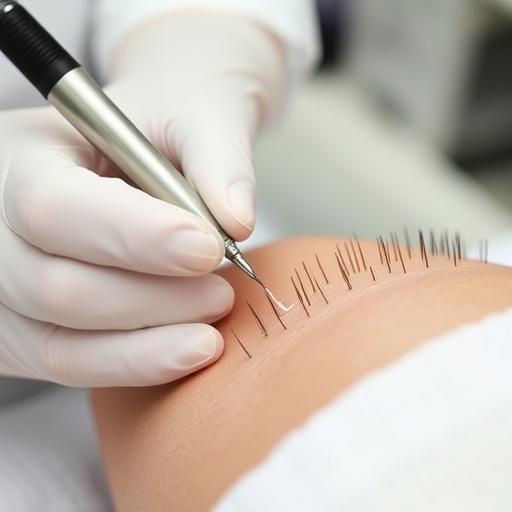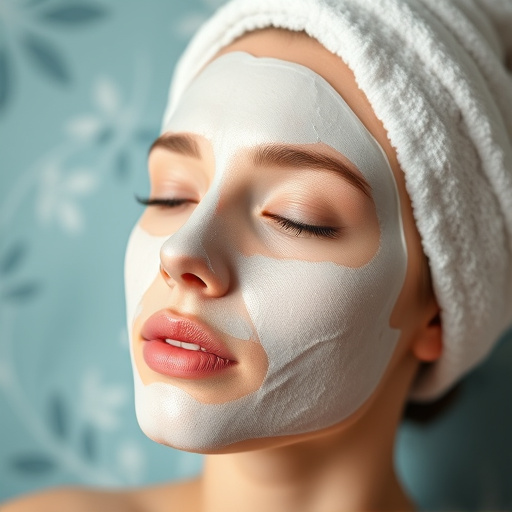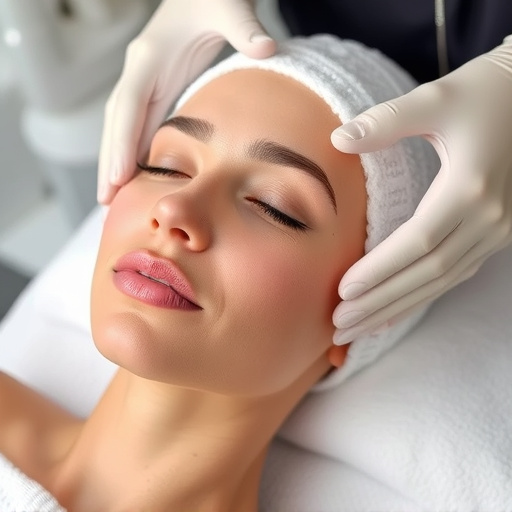Dermatitis, characterized by skin redness, itching, and swelling, requires tailored management. Key types include atopic, contact, and seborrheic dermatitis. Medical spas offer advanced solutions like laser hair removal and non-invasive procedures to alleviate discomfort and enhance healing. Severity evaluation, visual examinations, and patient history guide diagnosis, leading to personalized treatments such as hydrating facials or aesthetic procedures. Skincare plans focus on symptom management and preventing flare-ups. Customized treatments addressing specific dermatitis types, with professional techniques like microneedling and skin tightening, ensure effective, individualized care.
Dermatitis, an umbrella term for skin inflammation, presents various types and severity levels. Understanding these nuances is key to effective dermatitis treatment. This article guides you through the process of identifying different dermatitis types and assessing their impact. We explore personalized approaches tailored to individual needs, ensuring relief from symptoms. By delving into these strategies, you’ll gain insights into achieving clear, healthy skin, with a focus on targeted and customized dermatitis treatment methods.
- Understanding Different Types of Dermatitis
- Assessing Severity Levels for Effective Treatment
- Personalized Approaches to Managing Dermatitis Symptoms
Understanding Different Types of Dermatitis

Dermatitis is a broad term encompassing various skin conditions characterized by redness, itching, and inflammation. Understanding the specific type of dermatitis is crucial for effective dermatitis treatment. Atopic dermatitis, for instance, is a chronic condition often linked to allergies and asthma, while contact dermatitis results from direct exposure to irritants or allergens. Seborrheic dermatitis affects oily areas of the skin and scalp, causing flaking and redness. Recognizing these distinct types is the first step towards tailoring appropriate dermatitis treatment methods.
Seeking professional help from a medical spa specializing in dermatological care can be beneficial. Skilled estheticians offer advanced treatments like laser hair removal for affected areas, which may alleviate itching and discomfort. Additionally, they provide non-invasive procedures such as wrinkle reduction techniques to minimize skin damage and enhance healing. With the right approach, managing dermatitis becomes more manageable, allowing individuals to find relief and maintain healthy skin.
Assessing Severity Levels for Effective Treatment

Evaluating the severity of dermatitis is a crucial step in determining the most effective treatment approach. This condition manifests in various forms, ranging from mild itching and redness to severe rashes causing pain, swelling, and even crusting. Dermatologists employ specific criteria to classify dermatitis based on these symptoms’ extent and impact on daily life. Typically, this involves assessing the affected area’s size, intensity of itching, duration, and any potential disruptions to normal routines or sleep patterns.
For accurate diagnosis, medical professionals consider visual examination alongside patient history. This process enables them to prescribe tailored treatments like hydrating facials for dry, irritated skin or recommend specific aesthetic treatments for targeted relief. Personalized skincare plans are then devised, focusing on managing symptoms and preventing future flare-ups, ensuring optimal dermatitis treatment outcomes.
Personalized Approaches to Managing Dermatitis Symptoms

When it comes to dermatitis treatment, personalized approaches are key to managing symptoms effectively. Dermatologists now recognize that each type of dermatitis, whether atopic, contact, or seborrheic, requires a tailored strategy. This means addressing not just the visible symptoms but also understanding and targeting the underlying causes. For instance, while topical corticosteroids might relieve inflammation for atopic dermatitis, they aren’t suitable for treating contact dermatitis.
Professional skincare plays a pivotal role in these personalized treatments. Techniques like microneedling therapy can enhance skin absorption of active ingredients, boosting the efficacy of topical treatments. Additionally, skin tightening procedures can help address the physical manifestations of certain types of dermatitis, improving both appearance and comfort. These tailored strategies ensure that dermatitis treatment is not one-size-fits-all but rather adapts to the unique needs of each individual’s skin condition.
When it comes to dermatitis treatment, understanding the specific type and assessing its severity is key. By tailoring approaches based on these factors, individuals can effectively manage symptoms and achieve clearer skin. Personalized care, ranging from topical therapies to lifestyle changes, ensures a comprehensive strategy that addresses the root causes of dermatitis, offering long-lasting relief and improved quality of life.














